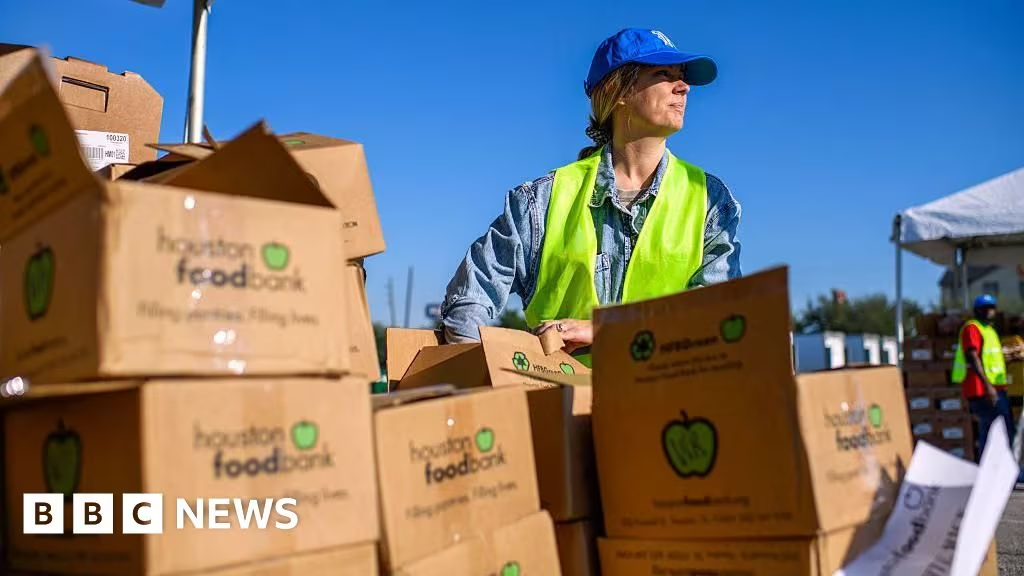Supreme Court Emergency Order Allowed Temporary Restriction of Food Aid
The U.S. Supreme Court delivered a significant, albeit temporary, ruling concerning the nation’s primary anti-hunger program, the Supplemental Nutrition Assistance Program (SNAP), often referred to as food stamps. The Court issued an emergency order that, for a time, allowed the executive branch to proceed with implementing a controversial rule change that would have restricted access to benefits for hundreds of thousands of low-income Americans.
This action, taken via the Court’s expedited “shadow docket,” temporarily overturned a nationwide injunction issued by a lower federal court. The core dispute centered on the authority of the Department of Agriculture (USDA) to impose strict work requirements on certain SNAP recipients, particularly during a period of national economic distress.

The Rule at the Center of the Controversy
The rule in question targeted Able-Bodied Adults Without Dependents (ABAWDs). Under existing federal law, ABAWDs aged 18 to 49 who are not disabled or raising minor children are generally limited to receiving SNAP benefits for only three months in any 36-month period, unless they meet specific work requirements (working or volunteering at least 20 hours per week).
However, states have historically been able to request waivers from these time limits in areas with high unemployment. The rule championed by the administration sought to severely restrict states’ ability to grant these waivers, making it much harder for unemployed or underemployed individuals to maintain eligibility.
Potential Impact of the Restriction
If fully enforced, the rule was projected to have a massive effect on the social safety net:
- Recipients Affected: Estimates suggested that 688,000 to 700,000 individuals would lose their SNAP eligibility.
- Financial Impact: The cuts represented a loss of billions of dollars in federal food aid, impacting both recipients and local economies that rely on SNAP spending.
- Target Population: The rule disproportionately affected individuals in rural areas and those facing chronic underemployment, where meeting the 20-hour work requirement is often difficult due to lack of jobs or transportation.
The Legal Battle and the Shadow Docket
The USDA rule was initially scheduled to take effect, but a coalition of states and the District of Columbia sued to block it. A federal judge subsequently issued a nationwide injunction, arguing that the economic crisis and high unemployment rates made it inappropriate—and potentially illegal—to enforce stricter work requirements, as the intent of the waiver system was to provide relief during economic downturns.
When the administration appealed the injunction, the case landed before the Supreme Court, which chose to act via an emergency order. This type of order, often decided quickly and without full oral arguments, temporarily granted the administration the authority to implement the rule while the full appellate process continued.
The Supreme Court’s decision to lift the injunction, even temporarily, signaled a willingness to allow the executive branch to move forward with significant policy changes affecting the social safety net, despite ongoing legal challenges and the economic circumstances cited by the lower court.
Why the Emergency Order Matters
The use of the emergency order in this context was highly scrutinized by legal experts. Critics argued that using the “shadow docket” to allow a major policy change with such immediate and severe consequences, without a full hearing, undermined judicial transparency and due process. Proponents argued that the administration had the statutory authority to implement the rule and should not be indefinitely blocked by a single lower court judge.

Broader Implications for Federal Aid and Policy
While the specific rule regarding ABAWDs has seen subsequent legislative changes—notably through the Fiscal Responsibility Act of 2023, which adjusted the age limits and exemptions for work requirements—the Supreme Court’s temporary ruling set an important precedent regarding the balance of power during policy disputes.
This case highlighted several critical aspects of federal aid administration:
- Executive Authority: It tested the extent of the executive branch’s power to tighten eligibility criteria for entitlement programs through regulatory changes, rather than legislative action.
- State Waivers: It underscored the tension between federal mandates and states’ abilities to manage aid programs flexibly based on local economic conditions.
- Judicial Review: It demonstrated the Supreme Court’s increasing use of emergency orders to intervene in high-stakes policy disputes before they reach the full merits stage.
For recipients, the uncertainty created by the back-and-forth legal rulings meant constant anxiety over the potential sudden loss of crucial food assistance.

Key Takeaways
The Supreme Court’s temporary decision on SNAP funding was a pivotal moment in the ongoing debate over the scope and accessibility of federal safety nets:
- The Ruling: The Court temporarily allowed the administration to implement a rule restricting SNAP waivers for ABAWDs (Able-Bodied Adults Without Dependents).
- The Context: The rule was challenged by states arguing that the economic crisis necessitated broad waivers for work requirements.
- The Mechanism: The decision was made through an emergency order, bypassing the traditional full appellate process.
- The Impact: The rule threatened to cut off food aid for nearly 700,000 individuals, representing billions in lost funding.
- The Precedent: The ruling set a precedent for allowing executive branch policy implementation to proceed while legal challenges are still pending, even when those policies affect fundamental aid programs.
The temporary allowance by the Supreme Court underscored the vulnerability of federal aid programs to regulatory and judicial shifts. While the specific parameters of SNAP work requirements continue to evolve through legislation, the legal maneuver demonstrated the high stakes involved in policy disputes over social safety nets. For millions of low-income Americans, the availability of food assistance remains subject to complex legal and political battles fought at the highest levels of government, demanding constant vigilance from state administrators and advocacy groups.
Originally published: November 8, 2025
Editorial note: Our team reviewed and enhanced this coverage with AI-assisted tools and human editing to add helpful context while preserving verified facts and quotations from the original source.
We encourage you to consult the publisher above for the complete report and to reach out if you spot inaccuracies or compliance concerns.

